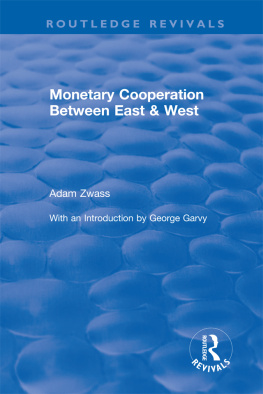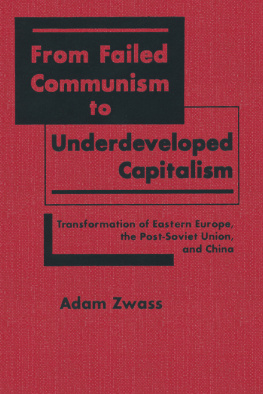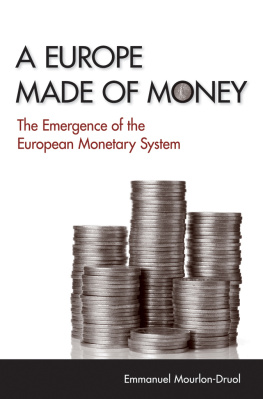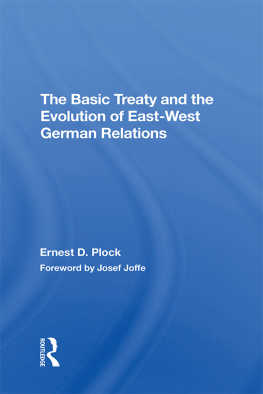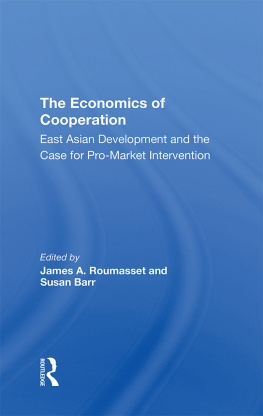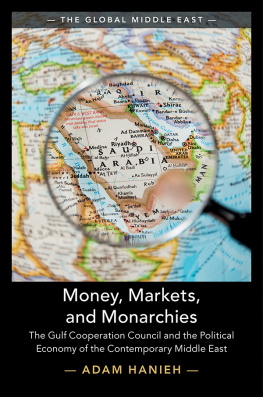Monetary Cooperation Between East &. West
Adam Zwass
Monetary Cooperation Between East & West
With an Introduction by George Garvy
First published 1975 by International Arts and Sciences Press, Inc.
Reissued 2018 by Routledge
2 Park Square, Milton Park, Abingdon, Oxon OX14 4RN
711 Third Avenue, New York, NY 10017, USA
Routledge is an imprint of the Taylor & Francis Group, an informa business
Copyright 1975 by Taylor & Francis
Originally published in 1974 as
Zur Problematik der Whrungsbeziehungen zwischen
Ost und West , Studien ber Wirtschafts-und Systemvergleiche, Band 5,
by Springer-Verlag, Wien/New York. Copyright F. Nemschak, Wiener
Institut fr Internationale Wirtschaftsvergleiche.
Translated by Michel Vale
No part of this book may be reprinted or reproduced or utilised in any form or by any electronic, mechanical, or other means, now known or hereafter invented, including photocopying and recording, or in any information storage or retrieval system, without permission in writing from the publishers.
Notices
No responsibility is assumed by the publisher for any injury and/or damage to persons or property as a matter of products liability, negligence or otherwise, or from any use of operation of any methods, products, instructions or ideas contained in the material herein.
Practitioners and researchers must always rely on their own experience and knowledge in evaluating and using any information, methods, compounds, or experiments described herein. In using such information or methods they should be mindful of their own safety and the safety of others, including parties for whom they have a professional responsibility.
Product or corporate names may be trademarks or registered trademarks, and are used only for identification and explanation without intent to infringe.
Publishers Note
The publisher has gone to great lengths to ensure the quality of this reprint but points out that some imperfections in the original copies may be apparent.
Disclaimer
The publisher has made every effort to trace copyright holders and welcomes correspondence from those they have been unable to contact.
A Library of Congress record exists under LC control number: 73092368
ISBN 13: 978-1-138-04578-1 (hbk)
ISBN 13: 978-1-315-17178-4 (ebk)
Foreword
To German-Language Edition
The fifth volume of the [Institute] series "Comparative Studies in Economics and Economic Systems" treats the problems of monetary relations between East and West.
The author, Dr. Adam Zwass, is especially well equipped to deal with this complicated subject. To it, he brings his extensive knowledge of monetary relations in Eastern Europe, gained while he held a number of posts in Poland and during his association with the CMEA Secretariat in Moscow. He already has to his credit a long list of publications concerning monetary matters (see his book, Pienidz dwch rynkw [Money of Two Markets], Warsaw, 1968).
It was not the author's intention to draw up a master plan for closer cooperation between the two monetary systems, which differ widely in many respects. His main concern is the Eastern monetary system, and its instruments, institutions, and functions are subjected to a thorough analysis. Problems are pinpointed and suggestions made for improvements. Finally, Dr. Zwass considers the prospects for the development of a worldwide currency system.
It is hoped that his book will stimulate further research that would pave the way for productive cooperation between East and West in monetary relations.
Franz Nemschak
Editor
Rampant inflation has sent the Western monetary system reeling. Monetary and credit relations continue to be a nagging problem in the East. Both sides, therefore, have ample grounds for giving serious thought to the reordering of monetary relations between East and West with a view toward expanding economic relations without compromising the fundamental distinctions between their social and economic systems.
The present book deals with monetary and credit relations in Eastern Europe in the wake of the economic reforms; the role of currency in the foreign trade of the CMEA nations; the CMEA monetary institutions and steering instruments; and the general outlook for East-West monetary relations.
The author is especially indebted to the editor of the book, Prof. Dr. Franz Nemschak, who made this project possible and contributed to it many valuable suggestions.
Finally, he would like to thank his colleagues at the Vienna Institute for Comparative Economic Studies, and especially the Research Director, Dr. F. Levcik, for their assistance; the Deputy Director of the Institute for Advanced Studies and Economic Research, Dr. Erhard Frst, and Dr. Fritz Schebeck of the Austrian Institute for Economic Research for editing the manuscript; the Austrian National Bank for its financial support; and, last but not least, his wife Friderike for gathering the source material and preparing the text.
Adam Zwass
GEORGE GARVY
Trade between the socialist countries of the East and the developed countries of the West has been growing vigorously in recent years. Further rapid expansion has been predicted with monotonous insistence by spokesmen on both sides. Optimists claim that growth of trade will contribute to, or even insure, peace. Pessimists insist that trade is merely a consequence of, rather than a contributing factor to, peace. At least some realists believe that, foreign trade being the only significant point of contact between centrally directed and market economies, the growing exposure of the East, and particularly of the Soviet Union, to market forces is bound to focus on the weakest points of the system of the socialist economies and strengthen demands for reforming it.
Many of the inconsistencies, rigidities and wastes of the economies of Eastern Europe are most clearly visible in the area of foreign trade. It thus seems logical to assume that significant reforms to improve the performance of the socialist economies must involve, or even originate in, corrective measures aimed at improving the contribution of foreign trade to optimization of resources use and technological upgrading. This has already been demonstrated in several countries of Eastern Europe. By the same token, differences in the scope, thrust and speed of the reforms initiated since the mid-sixties demonstrate the need for overcoming the tendency still lingering since the cold war years to regard Eastern Europe as a "bloc" and to fail to recognize the important differences that have gradually developed in the way the broad principles and objectives of socialist economies are implemented in individual countries. Dr. Zwass's monograph makes a significant contribution toward dispelling the misconception that Eastern Europe is a monolithic bloc.
Without focusing specifically on the economic reforms, or systematically analyzing differences in what, in socialist countries, is called "steering of the economy," Dr. Zwass has succeeded in conveying the flavor of tendencies toward national divergencies from the original uniform pattern established after the communist seizure of power in each country. The original USSR model has changed least. And yet it is unrealistic to expect that significant moves toward incorporating market-oriented elements into the economic systems of the other socialist countries can make much further progress without at least tentative moves in this direction by the Soviet Union.


